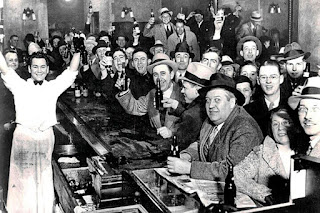
Please take a look at this webpage, it has every genre of music ever created from start to finish
http://everynoise.com/engenremap.html
!900's to 1950
1880s-1890s phonograph (thank you, Edison!) starts growing in popularity; Louis Glass installs the first coin-operated one; predecessor to jukebox
sheet music becoming less expensive; booming sales of Scott Joplin's "Maple Leaf Rag"; ragtime flourishes in Storyville, LA (written in 2/4 + trio section; not improvised like jazz) 1900-1910s 1900: "His Master's Voice" est. by E.R. Johnson; cylinder phonograph co. // beginnings of vaudeville musical theatre // Symphony Hall built in Boston, MA
1902: Ferdinand Joseph "Jelly Roll" Norton (17) started playing in New Orleans; "father of the jazz piano" // Claude Debussy introduces impressionism to music through his opera, "Pelléas and Mélisande" in Paris // pianola released by the Aeolian Co.
1903: "Walker and Williams in Dahomey" becomes first African-American Broadway production // Wilbur Sweatman records "Maple Leaf Rag"
1905: Harvard U grants first PhD in Music
1906: victrola gramophone introduced by Victor Talking Machine Co.; wildly popular 'til 1920s The Roaring Twenties aftermath of WWI; rising popularity in musical culture/Broadway // increased fascination with notion of modernity & breaking from "old" traditions // Chicago becomes jazz capital
Golden Age of radio; mass broadcasting; record companies in decline
Harlem Renaissance + the age of jazz: Duke Ellington, Louis Armstrong, King Oliver 1900-1910s 1907: Florenz Ziegfield launches "Ziegfield Follies," setting standard for Broadway shows ("current topics, comic routines...the ever-present gorgeous girls")
1909: gvt. passes Copyright Act, "to secure royalties for composers on the sale of recordings and public performances" // first usage of "jazz" in newspaper
1911: creation of the "barbershop quartet"
1913: Apollo Theatre opens in NY
1915: Jelly Roll Morton creates "Jelly Roll Blues," becomes known as the first jazz composer
1916: "When the Saints Go Marching In" published in a Baptist hymnal
1919: Prohibition takes a stand; may have helped further the development/refinement of jazz music 1930s-1940s Swing/Crooner era: Bing Crosby, Frank Sinatra, Benny Goodman
jazz still in full "swing," notable female artists: Ella Fitzgerald + Billie Holiday
rise of country/"hillbilly" music: Roy Rogers; became integrated into films // honky-tonk: fused Western swing + blues; melancholy themes 1950s classic pop: Patti Page ("Tennessee Waltz," "[How Much Is That] Doggie in the Window?")
1950: Little Richard dominated music scene with introduction of R&B ("Tutti Frutti," "Long Tall Sally"
latter 1950s: Rock'n'Roll; namely, Elvis Presley, Pat Boone (first teen idol) Bibliography
"1920's Music." The 1920's - Roaring Twenties. N.p., n.d. Web. 13 Feb. 2013.
"Jazz Culture: The 1920s." American Jazz Culture in the 1920s. University of Minnesota Duluth , n.d. Web. 19 Feb. 2013.
"Musical Trends of the 1930s and 1940s."Music in 1930s and 1940s America. N.p., n.d. Web. 13 Feb. 2013.
"The History of Recorded Music." Music CD Industry. IFPI, n.d. Web. 13 Feb. 2013.
Estrella, Espie. "Music of the 20th Century - 1900 to 1960." Music Education. About.com, n.d. Web. 13 Feb. 2013.
Scaruffi, Piero . " A History of the Musical." History of Popular Music. N.p., n.d. Web. 13 Feb. 2013.






